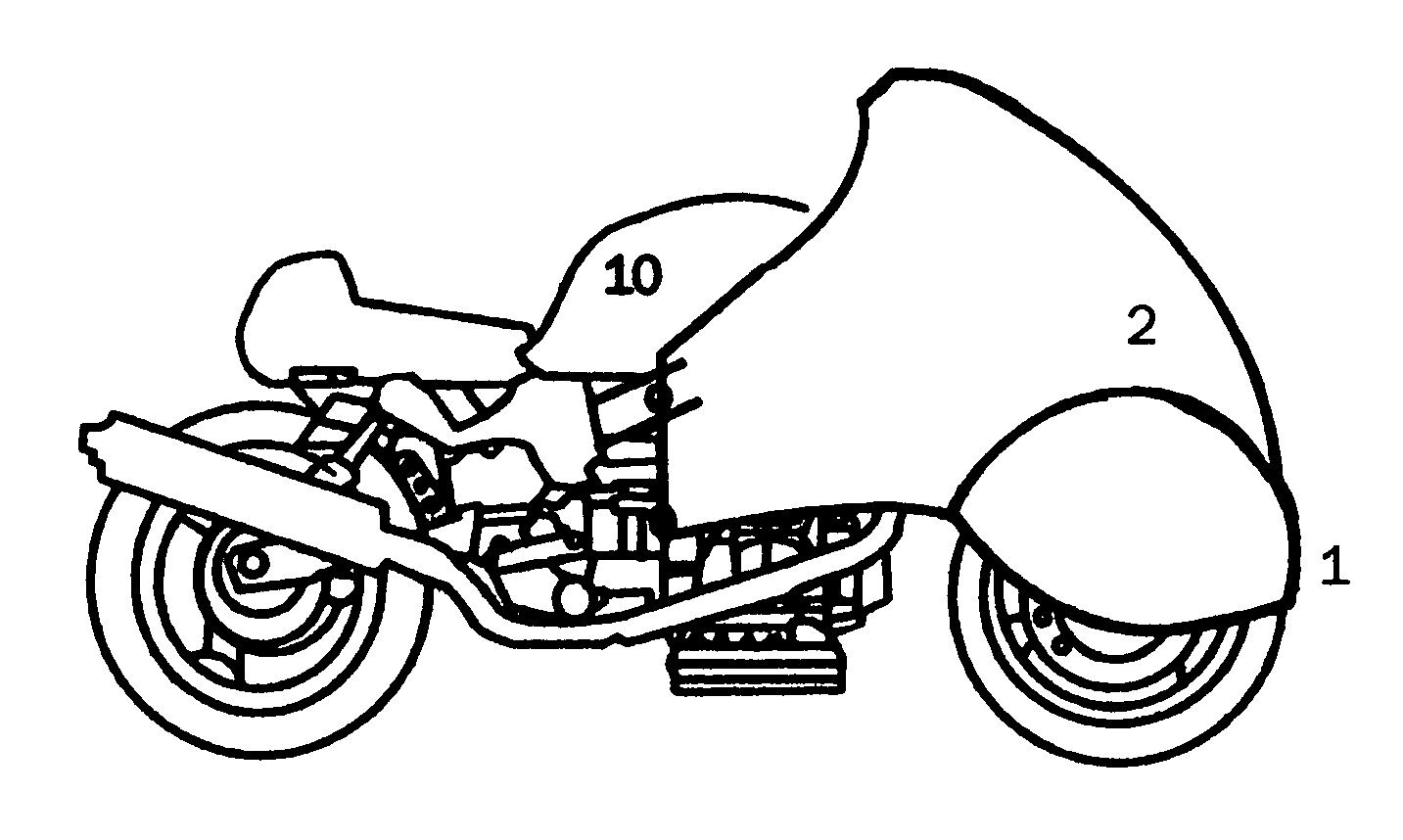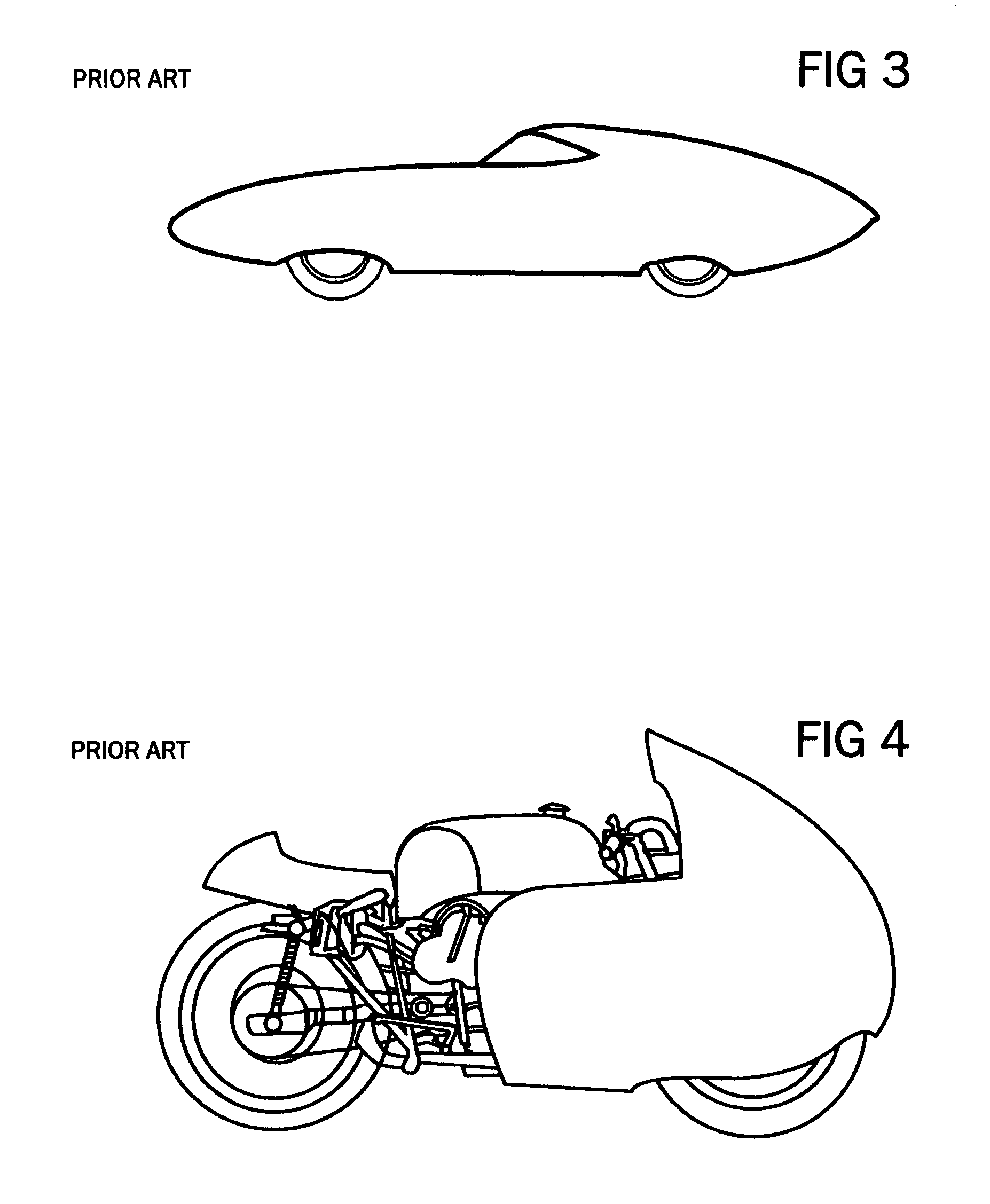Aerodynamic hemisphere and socket motorcycle fairing
a technology of aerodynamic hemisphere and socket, which is applied in the direction of roofs, cycle equipment, transportation and packaging, etc., can solve the problems of reducing the efficiency and performance of the motorcycle, and losing the opportunity to establish a smooth, or laminar flow of air around such a relatively rearward mounted type of fairing, etc. , to achieve the effect of improving the aerodynamic efficiency of the fairing, reducing wind buffeting and nois
- Summary
- Abstract
- Description
- Claims
- Application Information
AI Technical Summary
Benefits of technology
Problems solved by technology
Method used
Image
Examples
Embodiment Construction
[0057]For the purpose of understanding and promoting the principles of the invention reference will be made to the embodiment illustrated in FIGS. 5 through 12 and specific terms will be used to describe same. It should also be understood that no limitation on the scope of the invention is hereby intended by these drawings of the preferred embodiment in regard to the principles of the invention, as other alternative embodiments not shown in said drawings are possible and shall be indicated at the salient points in this description. None of the drawings as represented in FIGS. 1 through 14 are to an exact scale, as several of the views of the drawings are drawn from somewhat unusual perspectives in order to aid in a better understanding of the principles of the invention.
[0058]To further aid in the understanding of the principles of the invention, FIGS. 1 through 4 represent the four types of motorcycle fairing prior art as earlier described in the background of the invention. Partic...
PUM
 Login to View More
Login to View More Abstract
Description
Claims
Application Information
 Login to View More
Login to View More - R&D
- Intellectual Property
- Life Sciences
- Materials
- Tech Scout
- Unparalleled Data Quality
- Higher Quality Content
- 60% Fewer Hallucinations
Browse by: Latest US Patents, China's latest patents, Technical Efficacy Thesaurus, Application Domain, Technology Topic, Popular Technical Reports.
© 2025 PatSnap. All rights reserved.Legal|Privacy policy|Modern Slavery Act Transparency Statement|Sitemap|About US| Contact US: help@patsnap.com



